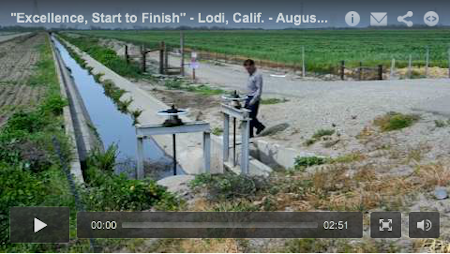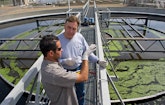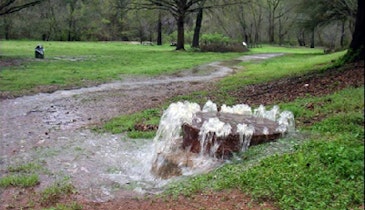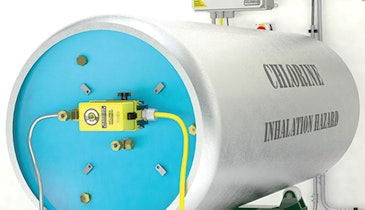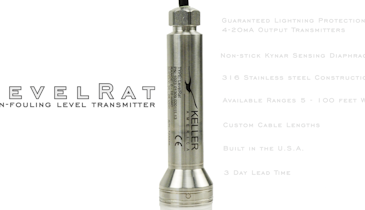
Interested in Treatment?
Get Treatment articles, news and videos right in your inbox! Sign up now.
Treatment + Get AlertsA lot has changed since 2007 at the White Slough Water Pollution Control Plant in Lodi, Calif. There’s a new biosolids process, a new tertiary treatment process, new leadership, and a big new customer for the plant’s tertiary-treated reclaim water.
One thing that hasn’t changed is the operating team’s commitment to excellence. Under Karen Honer, wastewater treatment superintendent, and Larry Parlin, deputy director of Public Works — Utilities, the staff consistently produces effluent that meets stringent nitrogen limits while finding innovative ways to keep costs down.
Those attributes helped White Slough win the 2012 Plant of the Year Award from the California Water Environment Association Northern San Joaquin Section in the category for medium-sized plants (5 to 20 mgd design flow). The city also won the 2012 CWEA section Collection Systems of the Year award.
Among the plant’s notable accomplishments was the creation by an in-house team of a tertiary treatment bypass system that cost $116,000 less than an engineering consultant’s estimate. The system allows the plant to use tertiary filtration and UV disinfection only for the amount of flow that must meet strict Title 22 state reclaimed water standards.
“I can’t say enough about the team here,” says Honer, who came on board in summer 2012 with nearly 30 years’ experience in the field. “They truly are a family. No one hesitates to help the other person. When someone is new, everyone is there to help them. It’s very easy to lead a group like this.”
Dual collections
Lodi, a city of 65,000 in the northern part of California’s Central Valley, lies in a wine-producing region and is also home to a variety of major industries. The city operates two collection systems — one for residential wastewater and the other for industrial flow, mainly from food processors and canneries.
Since 2007, the treatment plant has seen significant upgrades, most notably to the aeration, disinfection and solids processes, notes Parlin, who came to the city 18 months ago. Influent passes through a mechanical grit removal system (WEMCO Pump), followed by primary settling, the activated sludge process with diffused aeration and an anoxic zone for nitrogen removal (aeration diffusers by Parkson Corp.), and secondary clarification. The water then undergoes tertiary treatment in cloth media filters (Aqua-Aerobics Systems), and finally UV disinfection (TrojanUV).
In winter months (October through April), effluent not sold to reclaimed-water customers is discharged to Dredger Cut. During the rest of the year, water treated at least to secondary standards is pumped to ponds on the plant property and is used to irrigate 700 acres of land leased to local farmers for crop production.
Anaerobically digested biosolids are dewatered to about 15 percent solids in a pair of skid-mounted rotary fan presses (Prime Solution). The material is stored on a 0.65-acre covered concrete pad, where further drying occurs, and is picked up by farmers who apply it to the leased acreage, where they produce mainly corn, alfalfa and rye grass.
The biosolids process underwent a substantial change in 2012. “Before then, we ran the material through the digesters and piped it out to lagoons,” says Parlin. “Then we would decant the lagoons back to the headworks, and the farmers took the liquid biosolids and applied that to the fields.
“Then our new permit called for ammonia removal. At that point we couldn’t send all the solids from the decant back through the activated sludge system, because basically the ammonia loading just got too high. We had to reduce the recycle loading through the process so that we could get the proper nitrification and denitrification. That’s where the dewatering came in. Of course we still get high levels of ammonia in the filtrate from the fan presses, but nowhere near the amount that was tied up in the solids from the decant.”
The reclaim stream
The majority of the plant’s Title 22 reclaim water supplies cooling for a new 300 MW natural-gas-fueled electric power plant, built next to the White Slough facility by the Northern California Power Agency. The power plant uses about 1.5 mgd under a contract that brings the city at least $1 million in annual revenue.
“They run the water through reverse osmosis treatment first,” says Parlin. “There is no discharge — all that is left is the RO reject water, which is deep-well injected. Another reclaim water user is the San Joaquin Mosquito and Vector Control District. They take our water for the ponds where they raise mosquito fish [Gambusia], which they release into ponds and wetland areas to eat the mosquito larvae.”
The biggest recent change to the plant was the addition of a tertiary treatment bypass system, largely the brainchild of Ken Capitanich, chief plant operator. “Before I started working here, Ken realized that it wasn’t necessary to treat our water to Title 22 standards all the time,” Honer says. “In summertime, most of our water goes to the irrigation ponds, and that only requires secondary treatment.
“Ken said, ‘Let’s set it up with a diversion valve so that we don’t have to pay for tertiary treatment when we don’t need it.’ He worked with Kelly Powers, our maintenance supervisor; Nathan Shropshire, one of our mechanics; and a few other staff members. They came up with a design for a diversion valve.
“Meanwhile, we got a proposal from a consulting engineer for $152,000 to design, build and install the system. Our staff was able to do it for less than $40,000. It is roughly a 50-foot-long pipeline, 16 inches in diameter, with an actuating valve. Our people built it, installed it and made it work. I was in awe that they were willing and eager to take it on, because it was a major project.”
Now the system is set up so that enough water is tertiary-treated to meet the power plant’s demand for cooling water. “For anything above that,” says Parlin, “the control valve opens and sends secondary-treated water to the storage ponds. It saves us all the cost of filtering and disinfecting that water.” More recently, the in-house team took down, emptied and cleaned one of the plant’s four anaerobic digesters.
One big team
Such cooperation — on day-to-day work as well as special projects — is routine at White Slough. Besides those already mentioned, the plant team includes:
- Bobby Burkland, Judy Leyva and James Agnew, operator III
- Matt Rempfer, operator II
- Rochelle Helmersen, operator I
- John Flores, operator in training
- Brian Longpre, Brian Bock and Sandra Macomb, environmental compliance inspectors
- Sandra Nord and Mario Guerra, laboratory technicians
- Tommy Chocker, plant and equipment mechanic
- Richard Castelo, maintenance worker
The lines between functions are deliberately blurred — the entire Public Works Department embraces cross-training. “Electricians who do the work at White Slough also work on traffic signals and on water wells and the water treatment plant,” Parlin says. “Our plant and equipment mechanics rotate as well. They’ll be here for two months, then go into town for two months, then go to the water plant for two months. It really keeps the people fresh. They’re not going to the same location every day, doing the same things, and getting stagnant. They get new challenges on a regular basis.”
Honer herself wears multiple hats: In addition to the plant operators, she supervises the laboratory technicians and the environmental compliance inspectors who manage the industrial pretreatment program. Before her arrival, the plant superintendent and laboratory supervisor were separate positions.
“At many agencies, things evolve over time, and often they evolve beyond where they should,” says Parlin. “People become specialized, and you end up creating new positions. Over the last few years, the city has gone back toward what the model was 25 or 30 years ago, where people had more duties and did more different things.
“Our lab supervisor was supervising just two lab technicians and three environmental control inspectors, and our treatment plant staff isn’t that big. So it just made sense to combine the positions into one. We looked for somebody who had the top wastewater operator certification, management experience, and knowledge of the lab.”
Leading lightly
When it comes to leadership, Parlin and Honer share a belief in giving capable people the resources they need, then getting out of the way. Those resources include training. The city has in-house training programs through its Human Re-sources department and supports training through water and wastewater associations, regularly sending people to conferences and training events.
“We encourage all our people to obtain certifications, from our entry-level maintenance worker positions all the way up to mechanics and operators,” Parlin says. “I think we’re also successful because we communicate really well and really frequently about what’s going on.”
Parlin meets with the supervisory staff for one hour every two weeks and meets privately with each one for half an hour once a month. “I talk to them every day,” he says. “I’m often out in the field, and I stop by each area at least once or twice a week just to chat with folks and find out what’s going on. I started out as an operator in training many years ago, and I remember what it’s like for people who are new and inexperienced. It’s important for them to understand that people are interested in what they’re doing.”
Honer also believes in “management by walking about,” and her observations have led her to admire the members of her team. She recalls entering a boiler room to speak with lead operator Capitanich and finding him talking with newly hired operator Helmersen. “She had only been here a couple of months,” says Honer. “Ken was explaining every detail to her — this is what this is for, and here’s how you do this. I commented on how nice it would have been to have such a hands-on supervisor when I was an OIT.”
Next generation
Honer and Parlin recognize the importance of attracting more young people to the profession. “We have a lot of really good, long-tenured employees,” Parlin says. “Most of our supervisors could probably retire within five years. We’re conscious about bringing younger people into the entry-level positions.
“We’ll hire somebody who’s 60 if they’re the best person for the job, but in the last couple of years it seems we’ve been getting more young people into the pool of qualified candidates. I think the word is finally getting out about the opportunities available in this profession. Rochelle Helmersen was going to a junior college about 60 miles from here. She took a treatment plant tour with her environmental science class, and soon she was taking more such classes. Then she got an OIT job at a plant in the next town over, became certified, and we were fortunate to be able to hire her.”
Honer, while always on the lookout for talent, is more than satisfied with the team she now leads. “I call them the Slough Crew,” she says. “They’re great people.”
